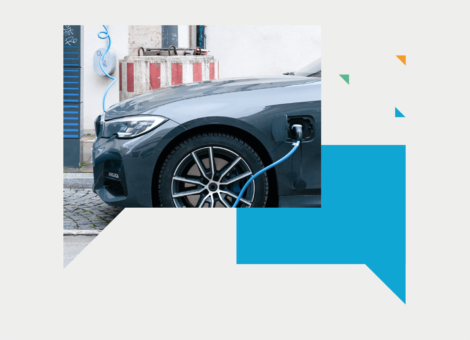How can fuel retailers appeal to the evolved EV consumer?
The growing electric vehicle (EV) market represents an opportunity for fuel and convenience retailers to expand and enhance their offer. Our previous blog explained how EVs have grown from emerging trend to obvious choice for modern motorists. Integrating an EV offer at your sites ahead of the curve will therefore better position you to secure long-term competitive advantage.
To fully access the benefits, your site offer will require the right infrastructure to facilitate charging, of course. But you’ll also need an understanding of how the EV consumer has evolved. How can retailers cater for EV consumer preferences to attract and retain their business?
The evolution of the EV consumer
Growing ecological concerns and the ubiquity of technology throughout society have combined to bolster EV demand.
To foster and accelerate EV uptake, further public investment is essential, particularly when urban areas lack the off-road parking and charging capability. Although the global number of publicly accessible chargers increased by 60% in 2019 according to IEA, BloombergNEF estimates 290 million global charging points are needed by 2040. Charging points are slowly increasing — global charging infrastructure has seen factor 10 growth in the past five years — but a network of visible charging stations is crucial for converting conventional drivers.
However, there’s already loyalty building around the technology and brands: 96% of EV owners told an AAA study they’d buy another for their next vehicle. As EV manufacturers develop and market new models more widely to capitalize on this, fuel and convenience retailers can also adapt by catering for EV consumer preferences.
Our research has shown the EV profile fits closely with the “American Royalty” and “Kids and Cabernet” consumer classifications of Experian’s Mosaic segmentation system. This translates to a higher socio-economic consumer — especially given the typical price of EVs — who are looking for comfortable amenities such as WiFi, seating areas, temporary workspaces, and children’s facilities. This will help make your sites more of a destination which appeals to EV consumers’ desires.
Moving to a customer-centric model with expanded offers and the right infrastructure will ensure retailers can capture these new opportunities and develop customer loyalty.
What does this mean for retailers?
Although there aren’t currently enough EV sites for consumers to be overly selective, facilities which make your sites more of a destination are important for building an EV brand. EV consumers will typically be waiting 15 minutes or more for their vehicle to charge, and they will want to productively use that time on-site. You can appeal by evolving your current offers and expanding into adjacent segments, such as quick service restaurants, to incorporate new product and service opportunities.
For now, however, consumers are still primarily looking for charging stations on their routes — especially for longer journeys — so analyzing mobility data for the sites across your network will help you assess the locations to prioritize. Kalibrate can help you identify areas of high demand, defining the catchment area and understanding customer profiles. We can also simulate the impact of EVs on your sites, informing your decisions on optimal charger placement.
An exemplary success story is Wawa’s integration of EVs across their network. Wawa offers modern sites with clean restrooms, high-quality made-to-order hot and cold food, and the facility to consume on-site. After installing their first charger (a Tesla Supercharger) in 2017, Wawa now has 35 locations with EV chargers installed. For a convenience store restaurant, that translates directly to a captive customer and increased revenue. This early move signals markets are beginning to recognize EV opportunities.
Retailers should consider the optimal location of chargers and how long EV consumers will be on site. Transform your network by developing formats aligned to EV consumer needs — not just by having the right chargers in the right locations, but also the right offer on site to extend the customer relationship beyond occasional visits.
—
To gain more actionable advice on an EV strategy, watch our instructional demo on charger placement.
Read more articles about:
Electric VehiclesSubscribe and get the latest updates
You may unsubscribe from our mailing list at any time. To understand how and why we process your data, please see our Privacy & Cookies Policy
Related Resources
Electric Vehicles
The evolution of EV technology and impact on fuel retailing
Anila Siraj, Head of Data Strategy discusses how the electric vehicle (EV) market has grown to become one of the most...

Electric Vehicles
Together in electric dreams: part one
The global electric vehicle (EV) market is growing at an incredible pace.


